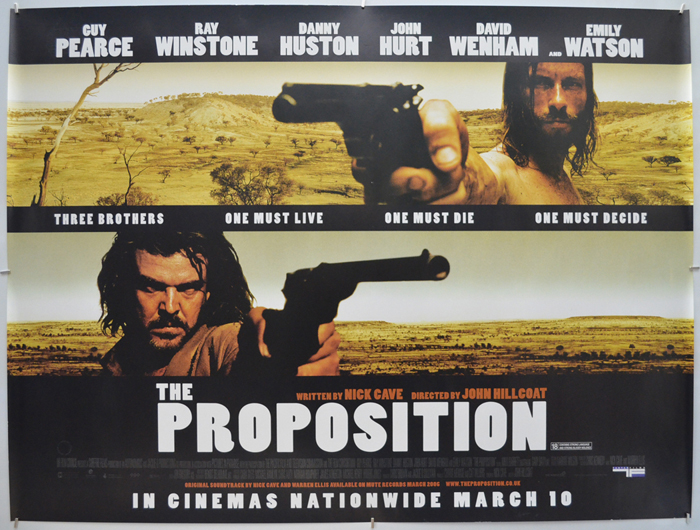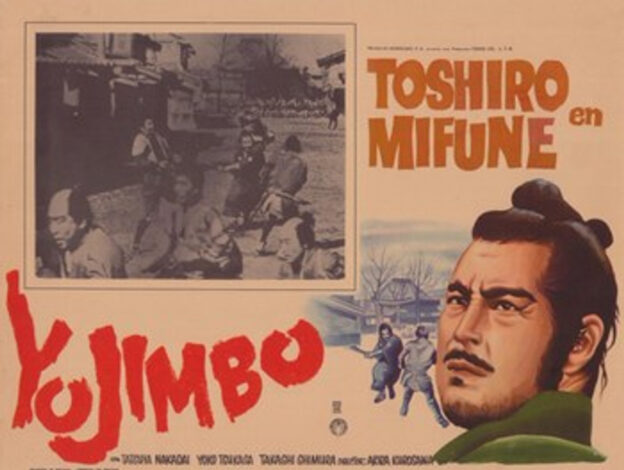The Western genre’s themes resonate globally, inspiring interpretations in Italy, Japan, and Latin America. Explore how different cultures have adopted and transformed the Western to reflect their unique histories, from Spaghetti Westerns to samurai films and beyond.
Introduction
While the Western genre is rooted in American history and culture, its themes of individualism, frontier justice, and the struggle between civilisation and wilderness have transcended national boundaries to influence storytelling around the world. Over time, the Western has been adapted, reimagined, and repurposed by filmmakers and writers from a variety of countries, each bringing their own cultural perspectives to the genre’s foundational themes. This global influence has resulted in some of the most iconic and enduring films in cinema history, and it has expanded the scope and relevance of the Western far beyond its American origins.
This article was inspired by conversations with my son, Bill, during his time at the University of Birmingham, on his degree course in English Literature. This article is the second of my “Myth of the West” cycle.
The Spaghetti Western: Italy’s Take on the American West
One of the most significant examples of the Western’s global reach is the rise of the Spaghetti Western, a subgenre of Western films produced primarily by Italian filmmakers in the 1960s and 70s. These films were shot in Europe, often in the deserts of Spain, and directed by filmmakers like Sergio Leone, who helped redefine the genre for a new generation of viewers.
Leone’s Dollars Trilogy, comprising A Fistful of Dollars (1964), For a Few Dollars More (1965), and The Good, the Bad and the Ugly (1966), is perhaps the most famous example of the Spaghetti Western. These films took the classic tropes of the American Western and infused them with a grittier, more stylised aesthetic, characterised by extreme close-ups, long silences, and a heightened sense of violence. The “Man with No Name,” played by Clint Eastwood, became an iconic figure of the genre, embodying the morally ambiguous anti-hero that would come to dominate Westerns for decades to come.
Spaghetti Westerns often depicted a more cynical and violent vision of the West than their American counterparts. Characters were motivated by greed and survival rather than honour or justice, and the line between hero and villain was frequently blurred. In The Good, the Bad and the Ugly, for instance, the three main characters are all driven by self-interest, and their interactions reflect a world where morality is relative and the pursuit of wealth is the ultimate goal. This darker, more nihilistic approach to the Western resonated with audiences in Europe and beyond, offering a critique of both the American myth of the West and broader ideas about power, violence, and human nature.
The Spaghetti Western also had a significant impact on American filmmakers, influencing directors like Clint Eastwood, Quentin Tarantino, and Robert Rodriguez. Eastwood, who rose to fame through his work in Leone’s films, went on to direct Unforgiven (1992), a revisionist Western that draws heavily from the moral complexity and visual style of the Spaghetti Western. Tarantino’s Django Unchained (2012) and The Hateful Eight (2015) similarly pay homage to the genre, blending its aesthetic with modern themes of race, justice, and revenge.
The Western in Japan: Samurai and Cowboys
The Western’s influence has also been deeply felt in Japan, where filmmakers have drawn parallels between the American cowboy and the Japanese samurai. Akira Kurosawa, one of Japan’s most celebrated directors, was particularly inspired by the Western genre, and his films, in turn, influenced many Western filmmakers.
Kurosawa’s Seven Samurai (1954) is a prime example of this cross-cultural exchange. The film tells the story of a group of samurai who defend a village from bandits, a plot structure that mirrors the classic Western tale of a lone hero or small group of heroes defending settlers from outside threats. Seven Samurai was later adapted into the American Western The Magnificent Seven (1960), directed by John Sturges, which relocated the story to the American West and replaced the samurai with gunfighters.
Kurosawa’s Yojimbo (1961), another influential film, directly inspired Sergio Leone’s A Fistful of Dollars. Both films feature a lone, enigmatic warrior (in Yojimbo, a ronin; in A Fistful of Dollars, a gunslinger) who plays two rival factions against each other in a small town, ultimately bringing about their mutual destruction. The thematic parallels between the ronin and the cowboy, the wandering, morally ambiguous figure who exists on the margins of society, have made the Western and the samurai film natural companions, and the two genres have frequently borrowed from one another.
In more recent years, the influence of the Western on Japanese media has continued, particularly in anime. Series like Cowboy Bebop (1998) and Trigun (1998) blend the aesthetics and themes of the Western with science fiction, creating futuristic settings where bounty hunters, outlaws, and lawmen navigate lawless frontiers reminiscent of the American West. These shows reflect the enduring appeal of Western archetypes, even in radically different cultural and temporal contexts.
The Western in Latin America: Cultural Adaptation and Social Commentary
Latin American filmmakers have also embraced and adapted the Western genre, often using its themes to explore local histories of colonisation, revolution, and social inequality. The Mexican Revolution, in particular, has provided fertile ground for Western-style storytelling, with films frequently focusing on the struggle between wealthy landowners and peasant revolutionaries, echoing the conflict between settlers and outlaws in American Westerns.
One of the most notable examples of the Western’s influence in Latin America is the Mexican subgenre known as the “Zapata Western,” named after Emiliano Zapata, a leading figure in the Mexican Revolution. These films, produced in the 1960s and 70s, often featured revolutionary heroes who fought against corrupt governments and oppressive landowners, drawing on the themes of justice and resistance central to the Western genre. The Zapata Westerns were a form of political commentary, using the iconography of the cowboy and the outlaw to critique contemporary social and political issues in Mexico and Latin America more broadly.
Films like A Bullet for the General (1966), directed by Damiano Damiani, and Tepepa (1969), directed by Giulio Petroni, blended the Spaghetti Western’s aesthetic with revolutionary themes, depicting the struggles of Mexican peasants and revolutionaries against the forces of wealth and power. These films often portrayed the revolutionaries as morally ambiguous characters, capable of both heroism and brutality, reflecting the complex dynamics of revolution and resistance.
More recently, films like Zama (2017), directed by Lucrecia Martel, have used the Western genre to explore the legacy of colonialism in Latin America. Set in the late 18th century, Zama tells the story of a colonial administrator who becomes increasingly disillusioned with the brutal and corrupt world around him. The film’s desolate, oppressive landscapes and its themes of alienation and moral decay echo the existential Westerns of directors like Sergio Leone and Sam Peckinpah, while also engaging with Latin America’s own history of conquest and exploitation.
Global Perspectives: The Western as a Universal Myth
The Western’s ability to adapt to different cultural contexts speaks to the universality of its themes. The conflict between law and order, civilisation and wilderness, and individualism and society are not unique to the American West; they are issues that resonate across cultures and historical periods. As a result, the Western has been embraced by filmmakers and writers around the world, who have used its structure and iconography to tell stories about their own histories and societies.

In Australia, for example, films like The Proposition (2005) have reimagined the Western in the context of the Australian outback, exploring the violent history of colonisation and the brutal conditions of life on the frontier. Directed by John Hillcoat and written by musician Nick Cave, The Proposition tells the story of a British colonial officer who captures two brothers and offers to spare one’s life if he can find and kill their more violent sibling. The film’s stark landscapes and morally ambiguous characters are deeply reminiscent of the American Western, but its focus on the legacy of British colonisation and its treatment of Indigenous Australians adds a distinctly Australian perspective.

In South Korea, The Good, the Bad, the Weird (2008), directed by Kim Jee-woon, is another example of how the Western has been adapted to fit a new cultural and historical context. Set in 1930s Manchuria, the film blends the themes and action of the Western with the historical backdrop of Japanese occupation. The film’s title and structure pay homage to Sergio Leone’s The Good, the Bad and the Ugly, but its setting and characters reflect the unique geopolitical tensions of East Asia in the early 20th century.
Conclusion
The Western genre, despite its strong association with American culture, has proven to be a global phenomenon. Filmmakers and writers from Italy, Japan, Latin America, and beyond have embraced the genre’s themes of individualism, justice, and frontier life, adapting them to reflect their own cultural contexts and historical experiences. Whether through the Spaghetti Westerns of Sergio Leone, the samurai films of Akira Kurosawa, or the revolutionary narratives of Latin American cinema, the Western has evolved into a truly global genre.
As the Western continues to inspire filmmakers around the world, it serves as a reminder of the universality of its core conflicts and themes. While the American West may be a specific historical and geographical setting, the ideas it represents, about law and justice, individualism and community, and civilisation and wilderness, resonate far beyond its borders. In this way, the Western remains a powerful and adaptable storytelling framework, capable of addressing the concerns and experiences of people from many different cultures and backgrounds.
